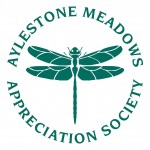Quotes from Wikipedia article on Jacobaea vulgaris / ragwort at https://en.wikipedia.org/wiki/Jacobaea_vulgaris :
Although the plant is often unwanted by landowners because it is considered a weed by many, it provides a great deal of nectar for pollinators. It was rated in the top 10 for most nectar production in a UK plants survey conducted by the AgriLand project which is supported by the UK Insect Pollinators Initiative. It also was the top producer of nectar sugar in another study in Britain.
In the United Kingdom, where the plant is native, ragwort provides a home and food source to at least 77 insect species. Thirty of these species of invertebrate use ragwort exclusively as their food source and there are another 22 species where ragwort forms a significant part of their diet.
Furthermore, English Nature identify a further 117 species that use ragwort as a nectar source whilst travelling between feeding and breeding sites, or between metapopulations. These consist mainly of solitary bees, hoverflies, moths, and butterflies such as the small copper butterfly (Lycaena phlaeas). Pollen is collected by solitary bees.
Ragwort is of concern to people who keep horses and cattle. In areas of the world where ragwort is a native plant, such as Britain and continental Europe, documented cases of proven poisoning are rare. Horses do not normally eat fresh ragwort due to its bitter taste.
Further reading:
➡ Ragwort Facts website
➡ Friends of the Earth Ragwort mythbuster
➡ Friends of the Earth briefing document: Ragwort: Problem plant or scapegoat?
➡ Article: Damned as dangerous but ragwort is full of life
➡ Article: Country diary 1918: a word of support for the ragwort

